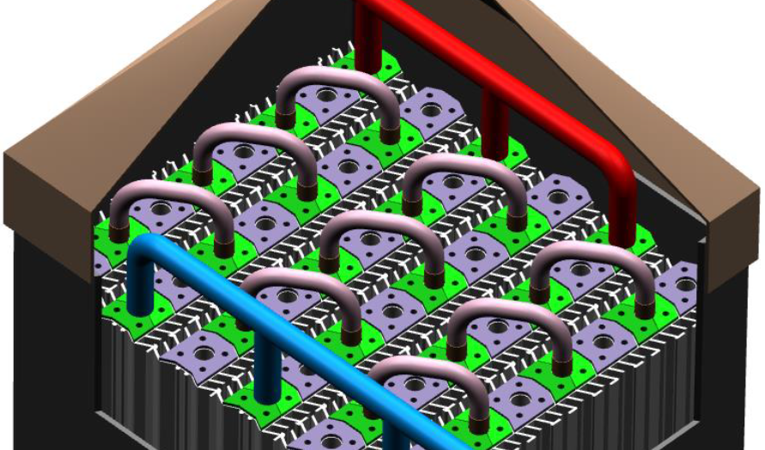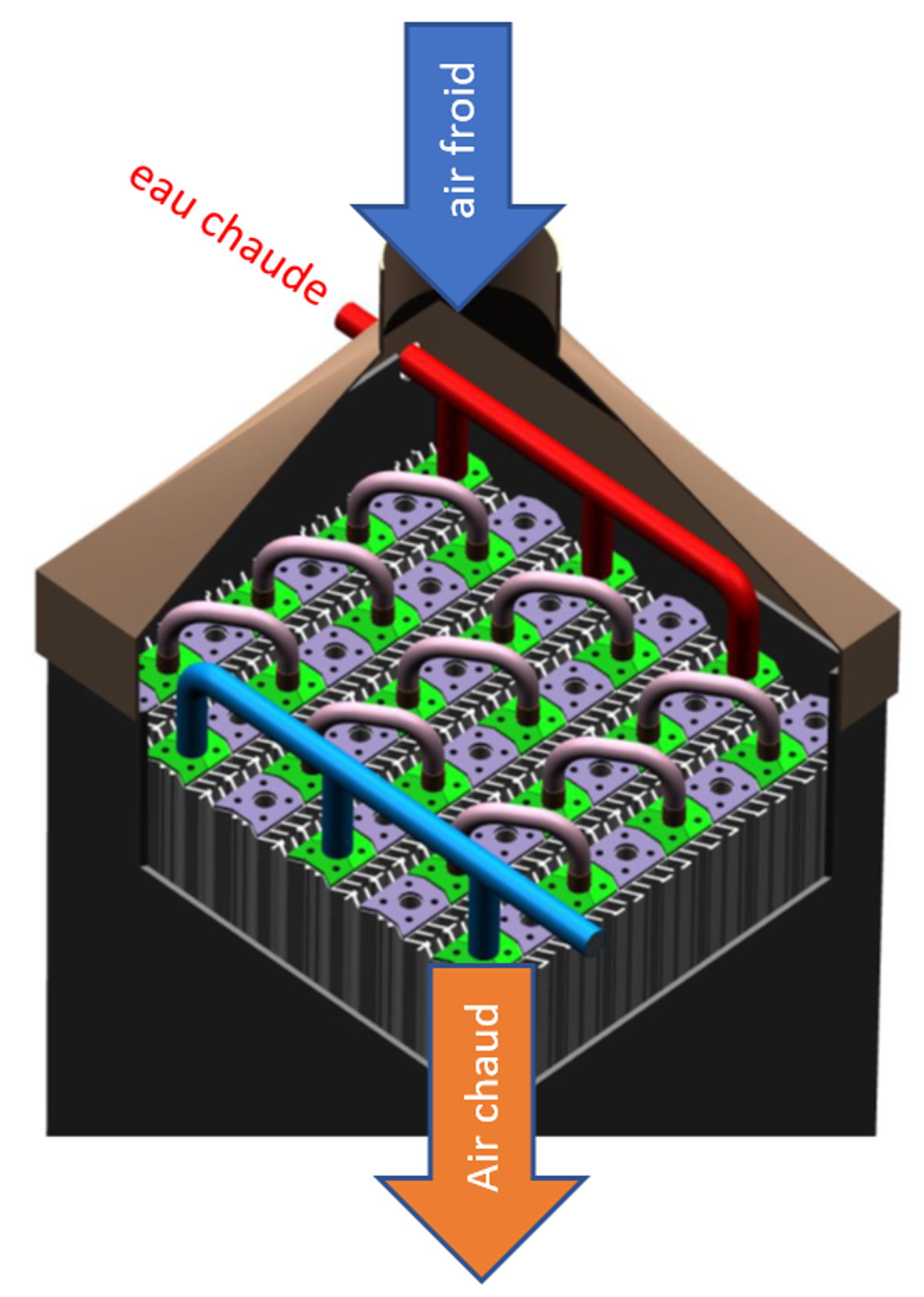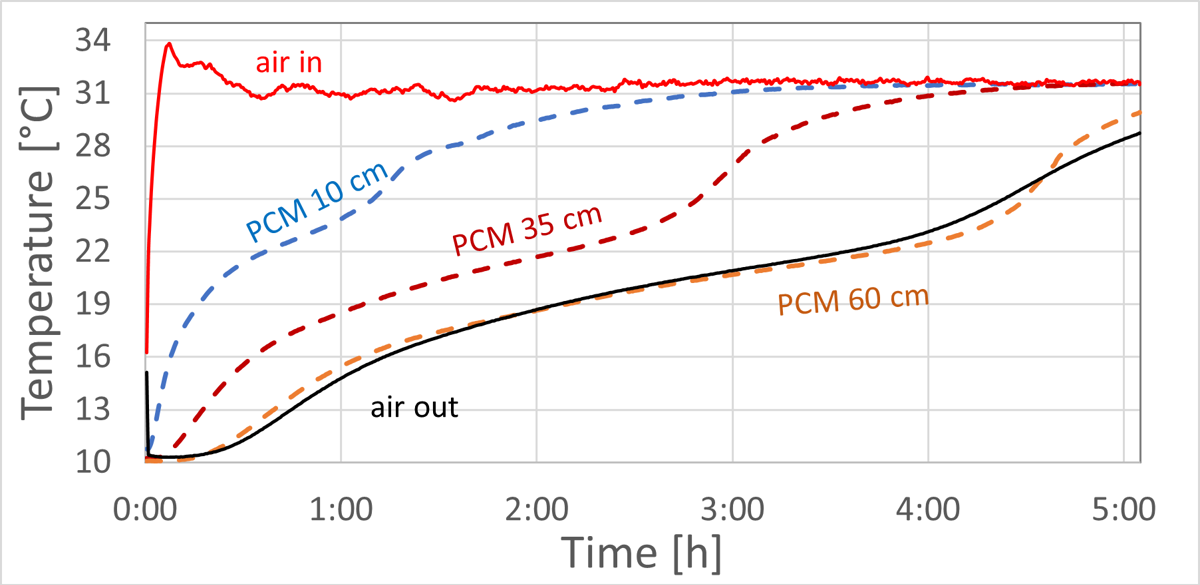Thermal batteries developed at HEIA-FR

Summary
Buildings and neighborhoods: energy efficiency and environmental impact
Innosuisse
WT SA, Sottas Building SA, Amstein+Walthert Genève SA et Aeby+Mouthon Architectes SA
Jacques Robadey
Skills directory
January 2019 - August 2021
HEIA-FR and the partners of the Innosuisse project "Hot and Cold PCM" – WT SA, Sottas Building SA, Amstein+Walthert Genève SA and Aeby+Mouthon Architectes SA – have developed a 0.1 m3 thermal battery that can store 2 kWh and deliver heating power of 300 W and cooling power of 440 W.
It is an air-water exchanger containing pockets of PCM (Phase Change Material) to store thermal energy. If the thermal battery illustrated below is charged by a water circuit, it is an air flow from the air exchange circuit that ensures the discharge.

The New Regional Policy project "SmarTS (Smart Thermal Storage)" aims to transform the demonstrator into a market-ready product.
Seven companies have created a consortium with HEIA-FR – WT, Wago, Sensortec, Belimo, Technic360, Aeby+Mouthon Architectes and SINEF – in order to lower the production costs of the prototype and improve its performance in terms of thermal capacity and power, degree of soundproofing and reduction of pressure drops.
A thermal storage management system will be developed to optimally select the charging/discharging/storing and air renewal modes according to the load rate, thermal and air renewal needs, renewable energy production and electricity prices.

In the graph above: Cooling obtained by a 0.1 m3 thermal battery for an air flow of 31°C and 100 m3/h. The temperature of the PCM near the inlet (10 cm), in the middle (35 cm), and near the air outlet (60 cm) shows that the phase transition of T= 23°C moves from the inlet to the outlet of the exchanger in 5 hours. The temperature of the outgoing air is very close to that of the PCM at 60 cm.